
Wir reisen, also sind wir
vakantio.de/wirreisenalsosindwir
Ecuador: Galapagos (Part 2: Cruise Day 1-4)
Publicado: 11.08.2018
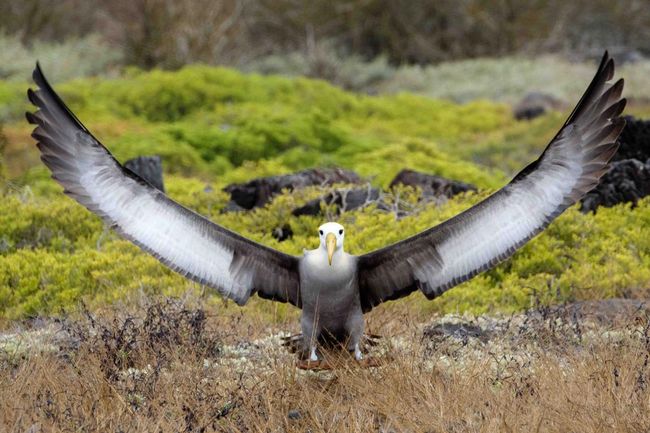
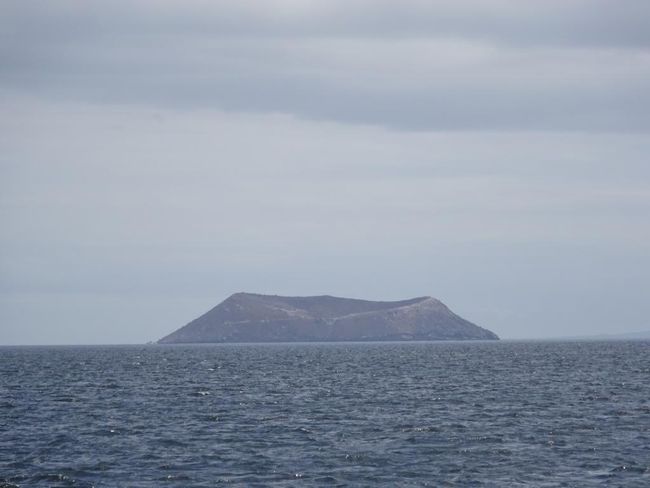
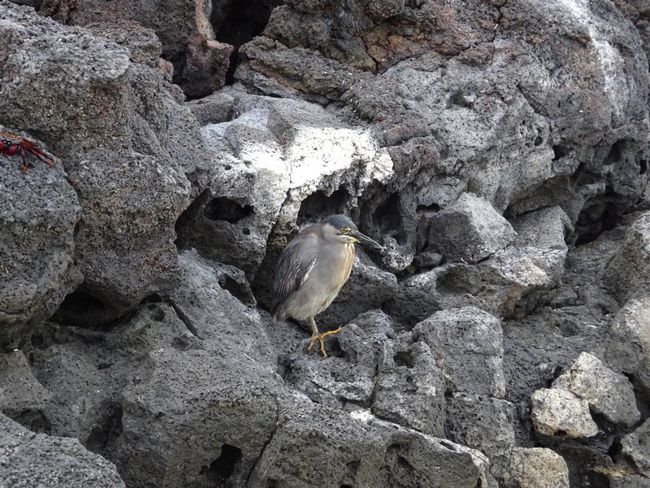
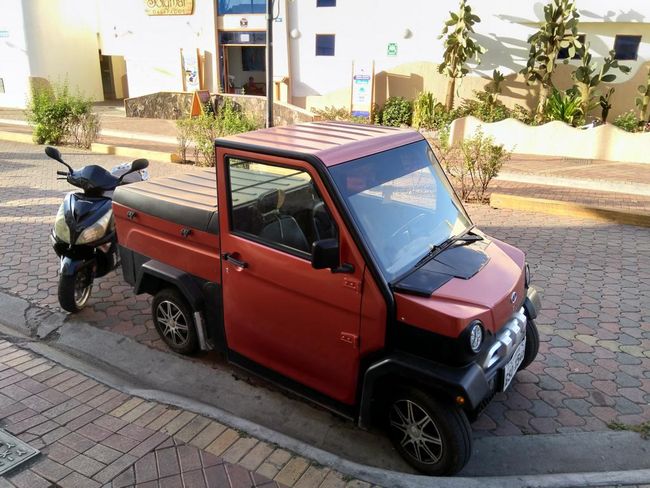
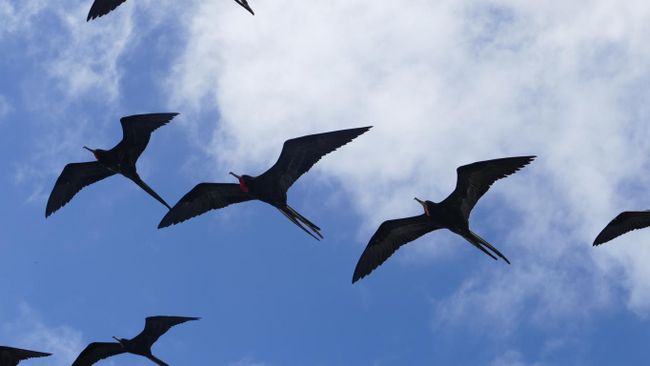
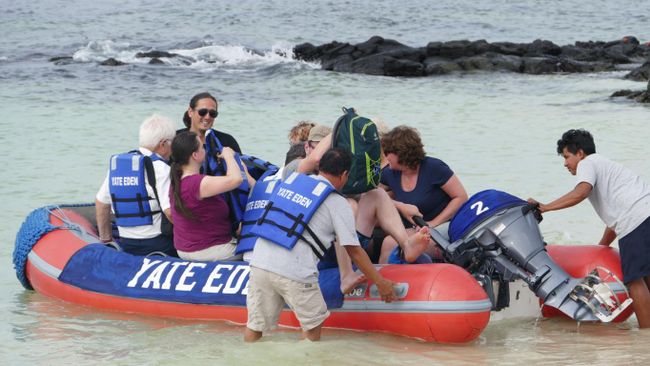
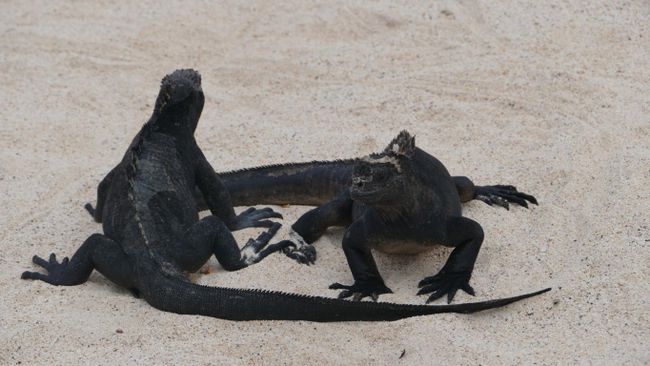
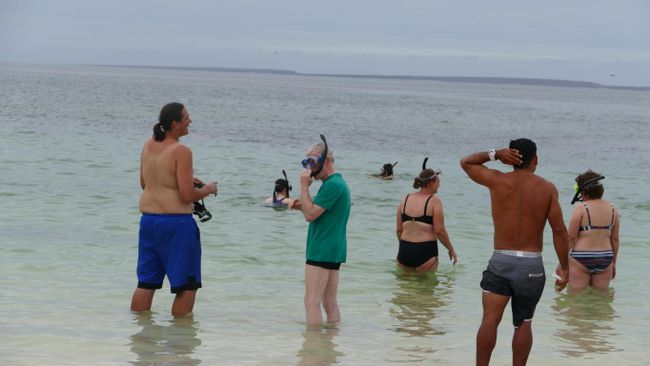
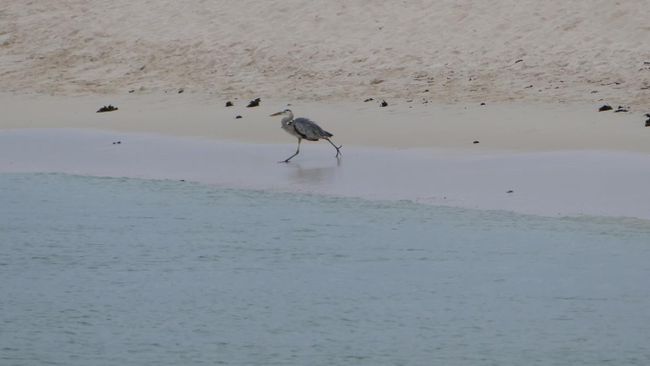
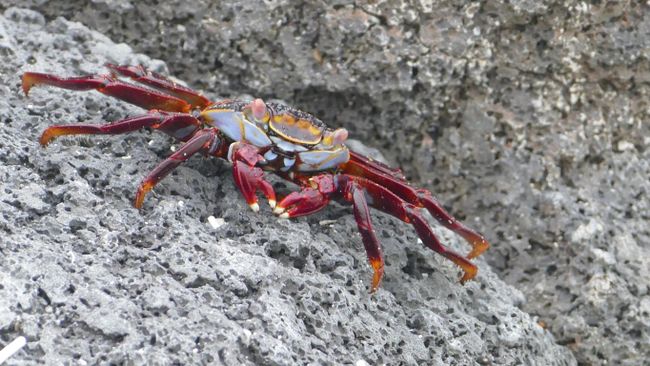
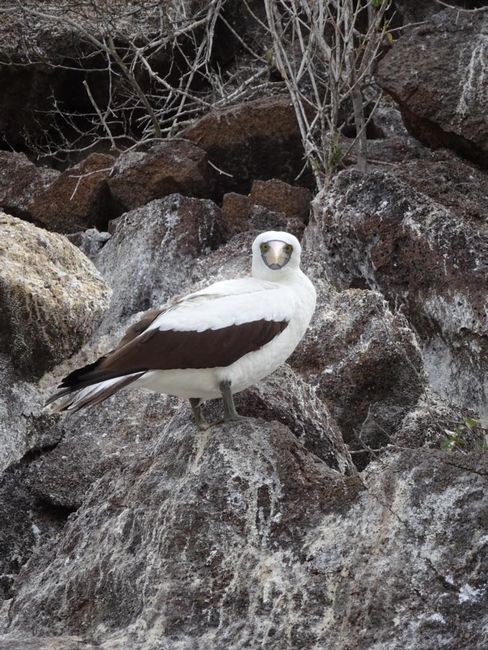
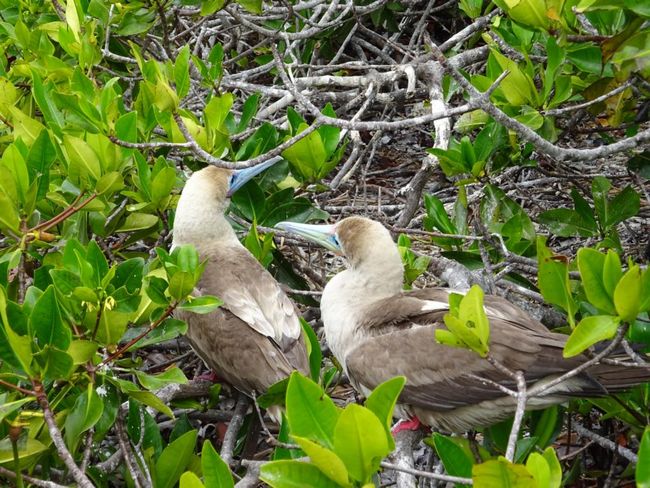
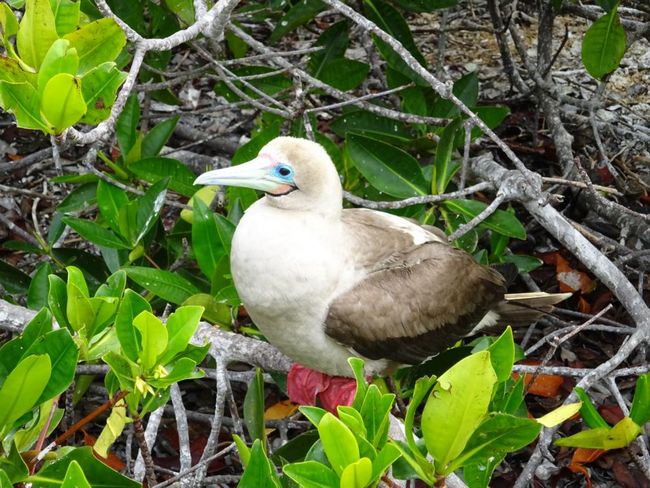
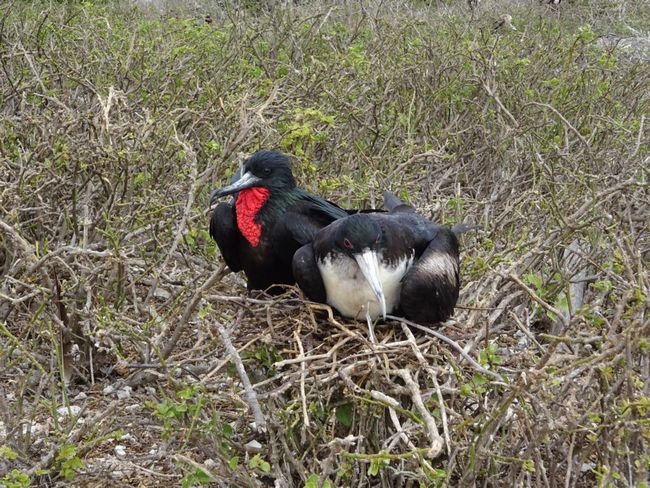
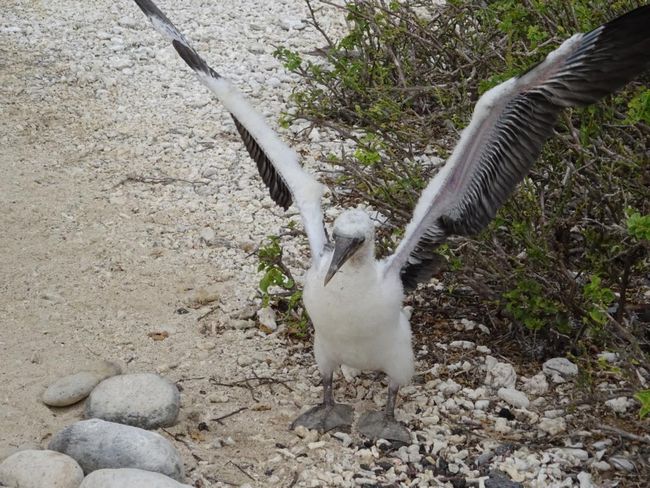
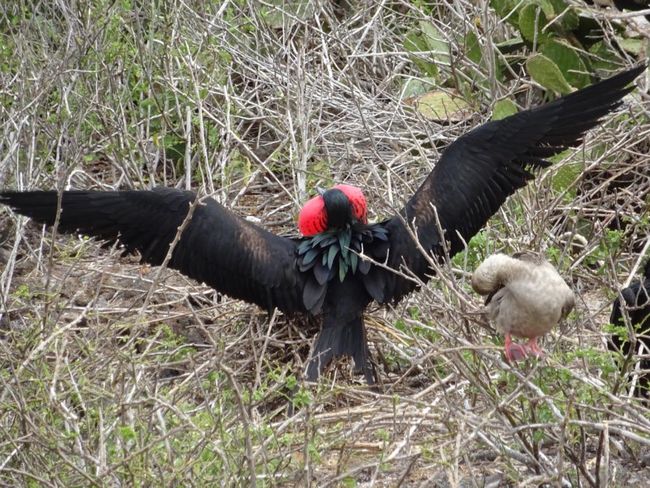
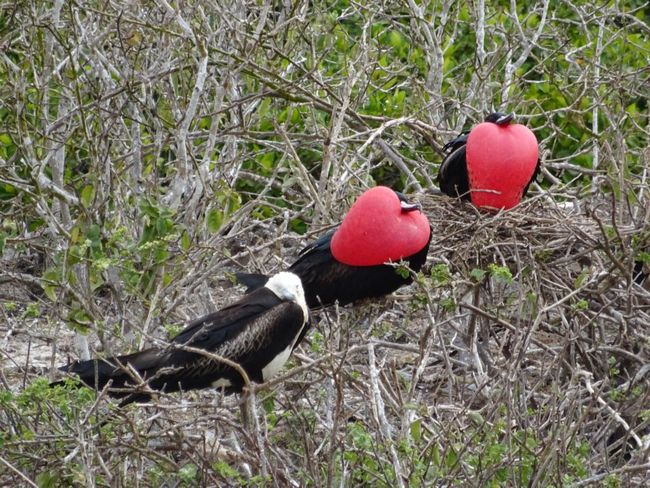
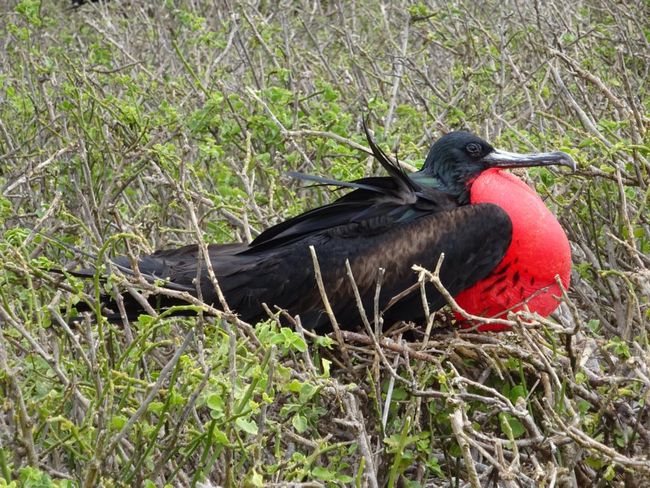
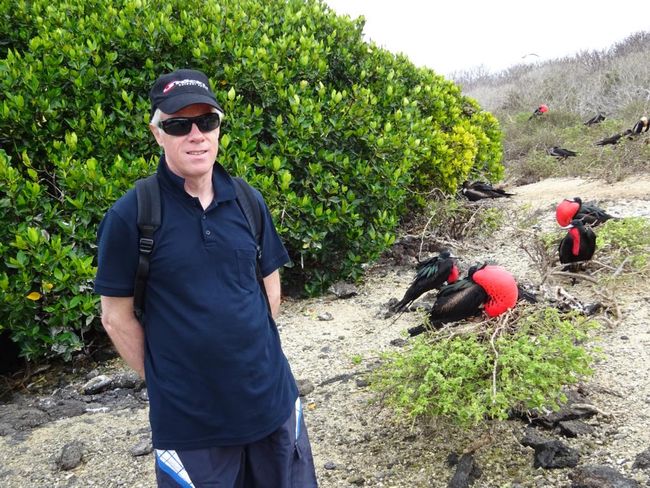
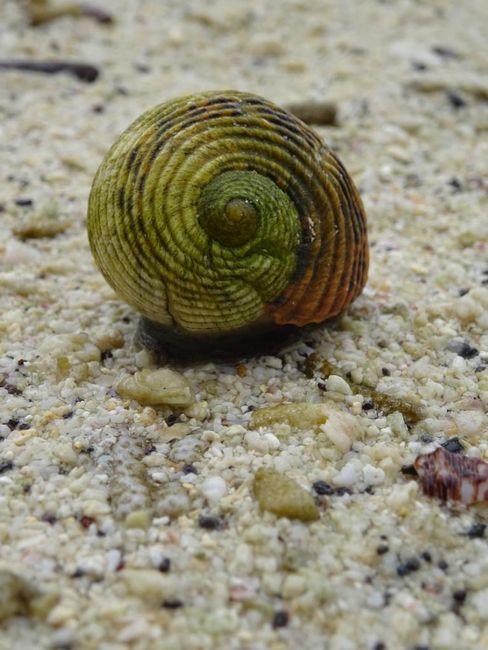
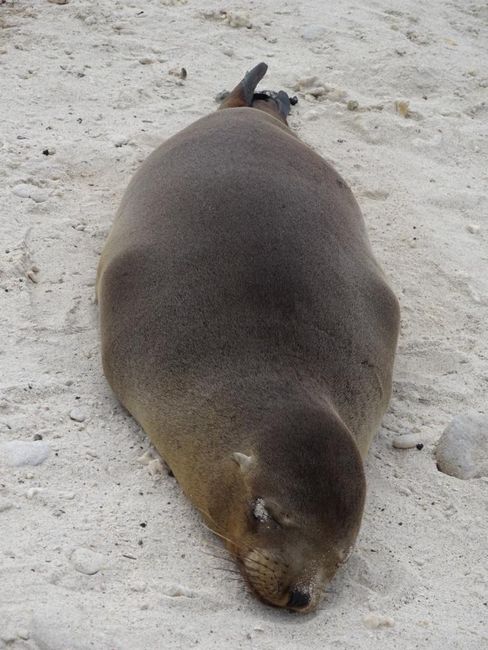
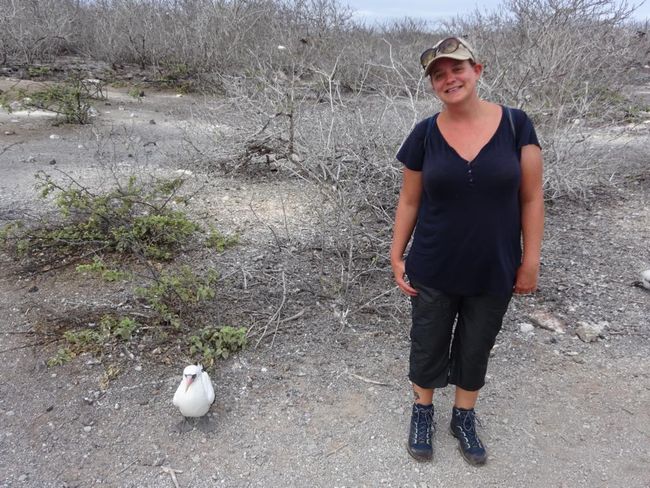
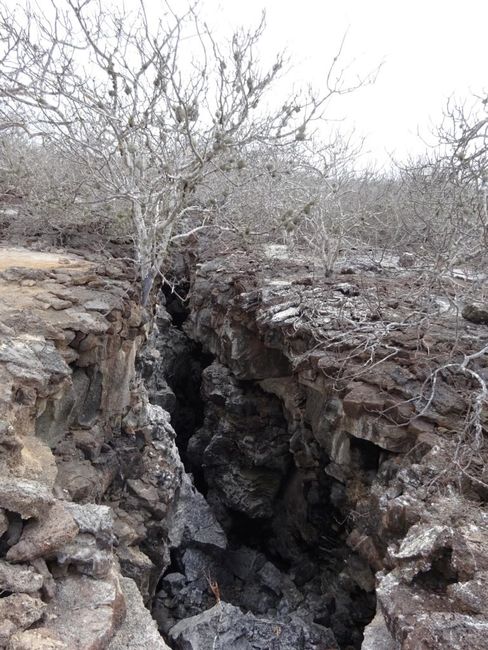
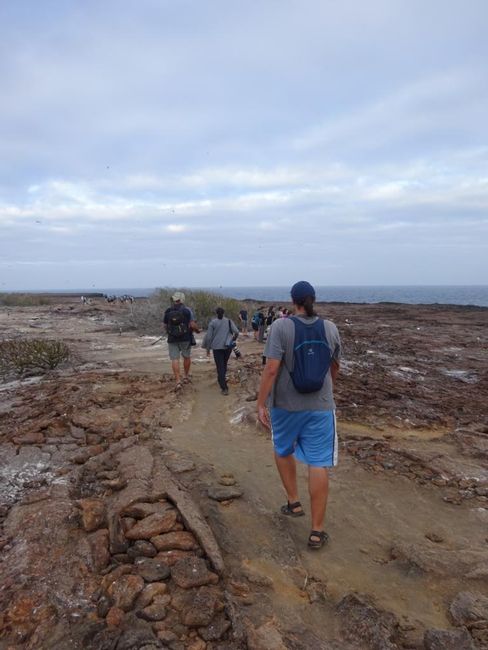
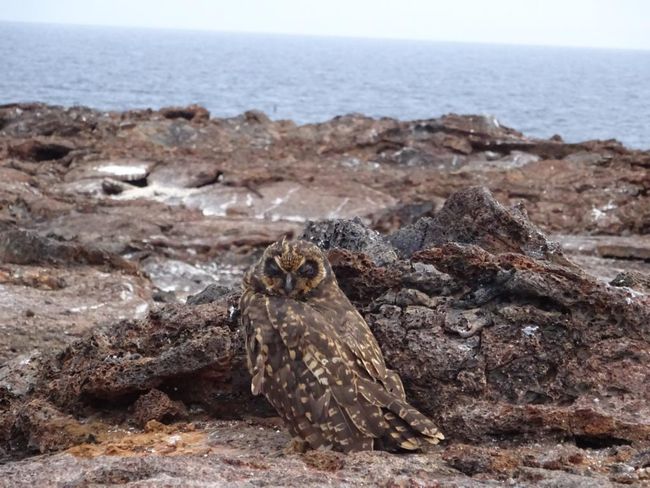
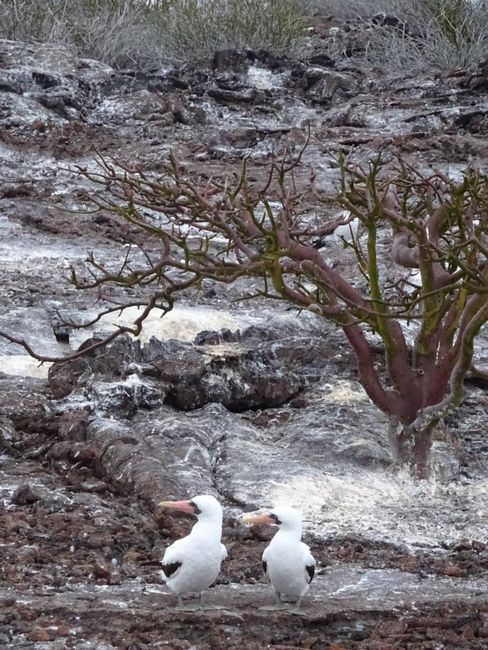
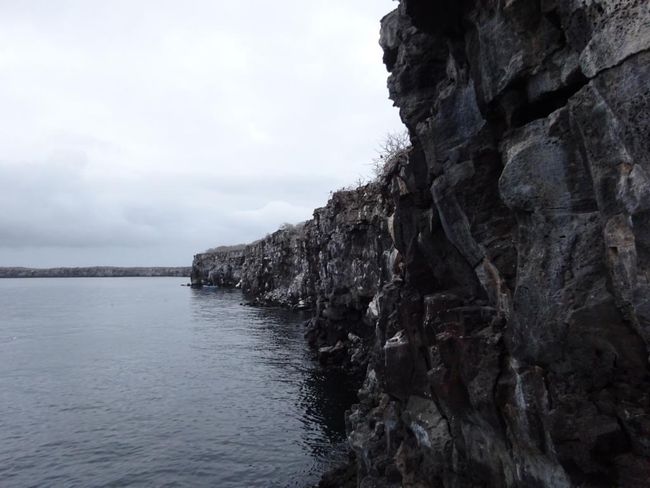
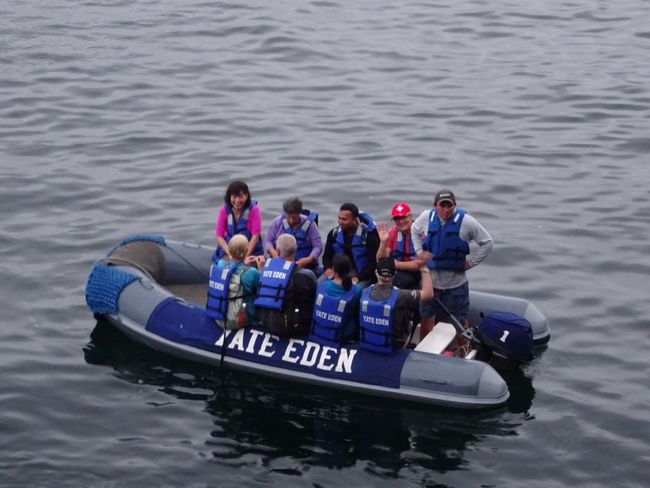
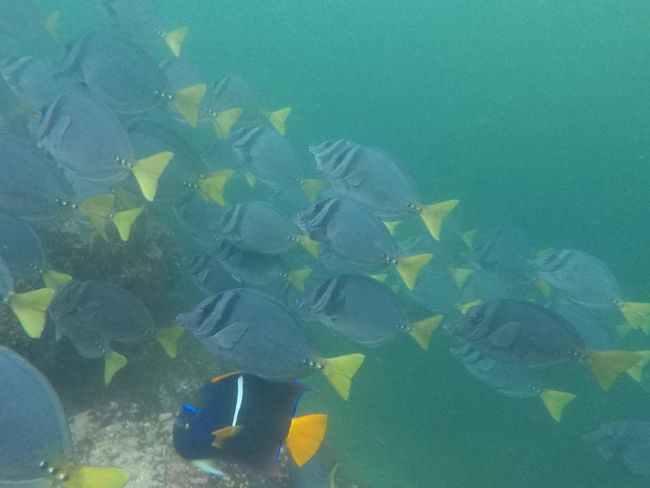
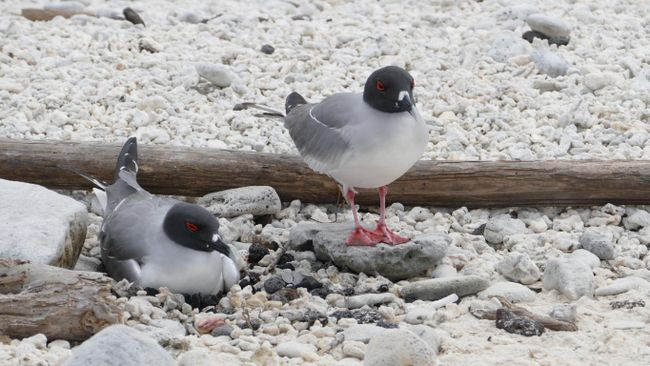
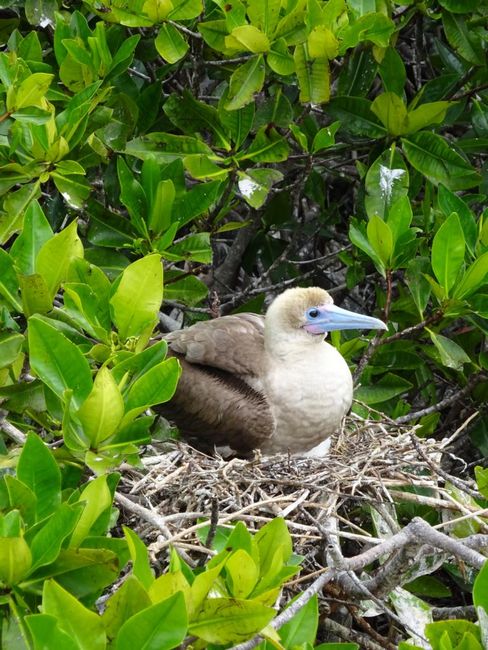
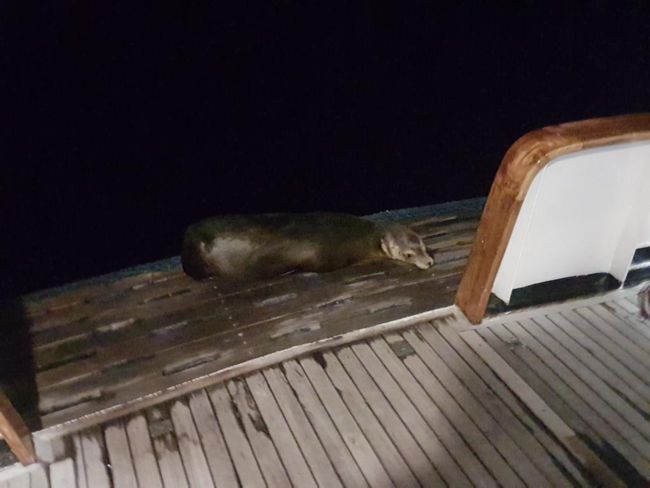
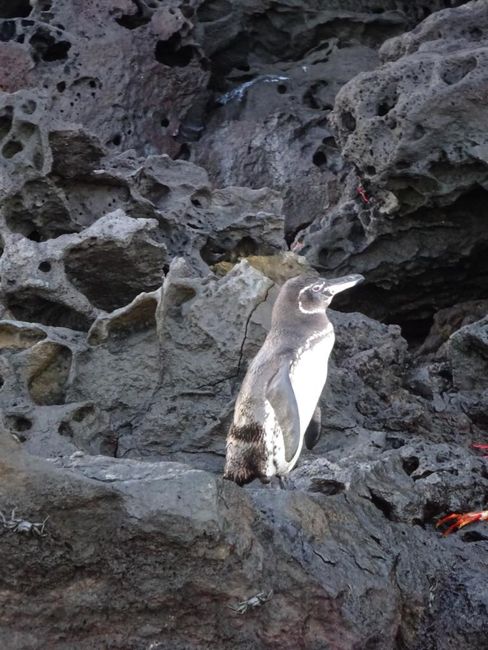
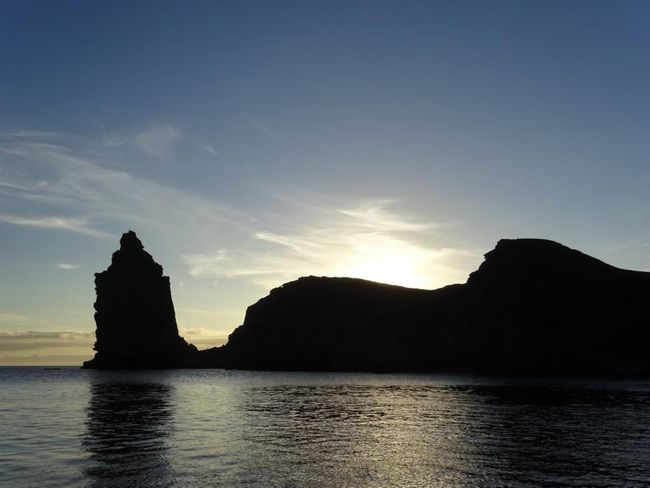
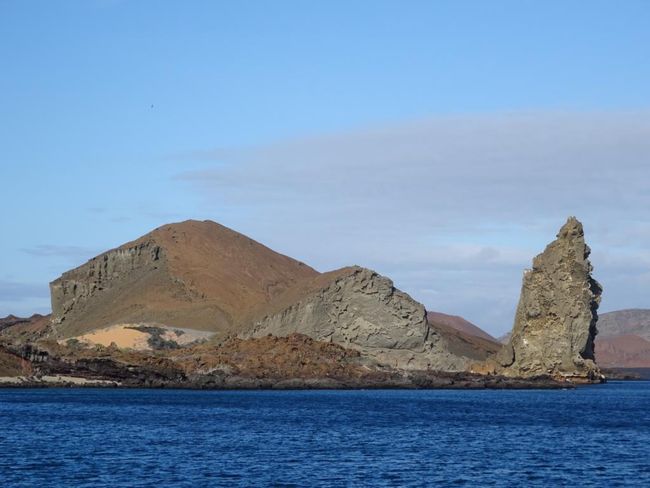
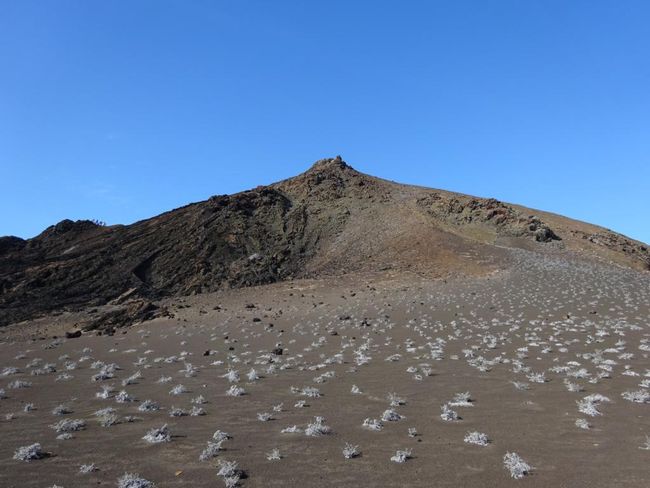
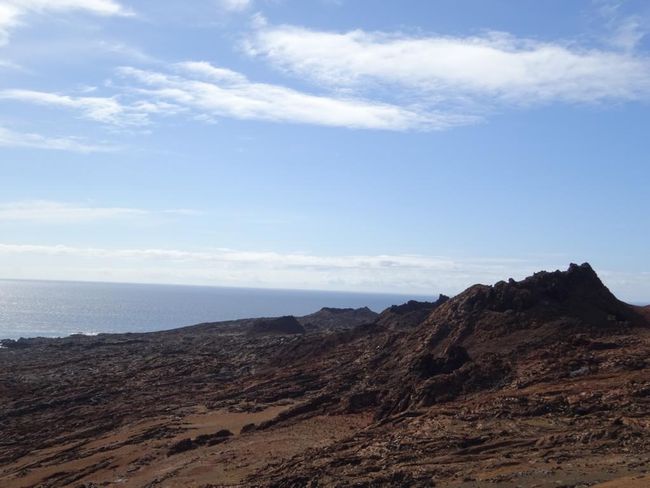
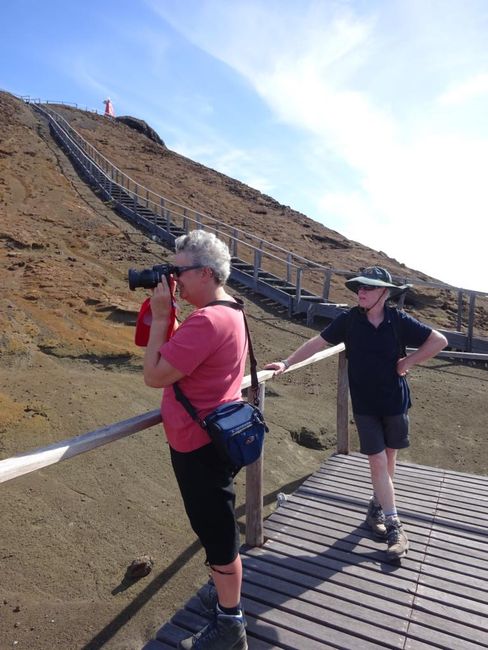
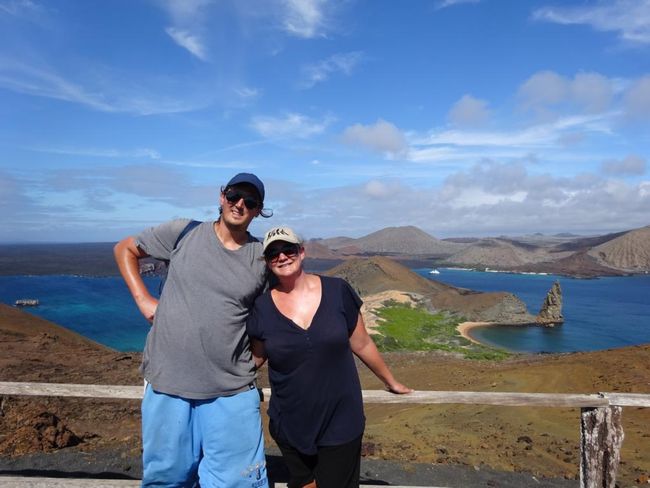
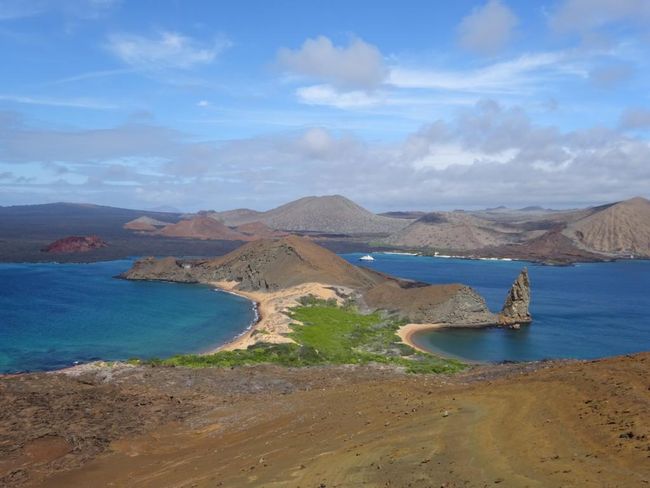
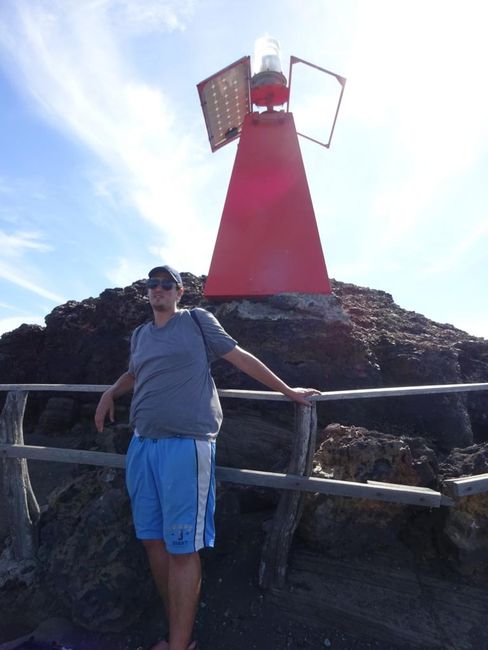
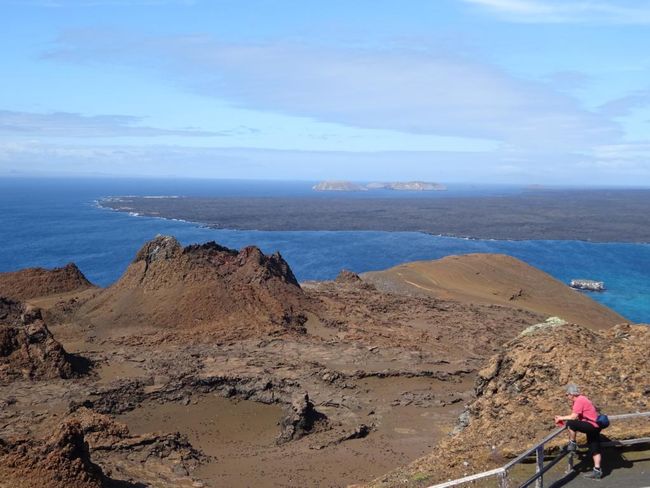
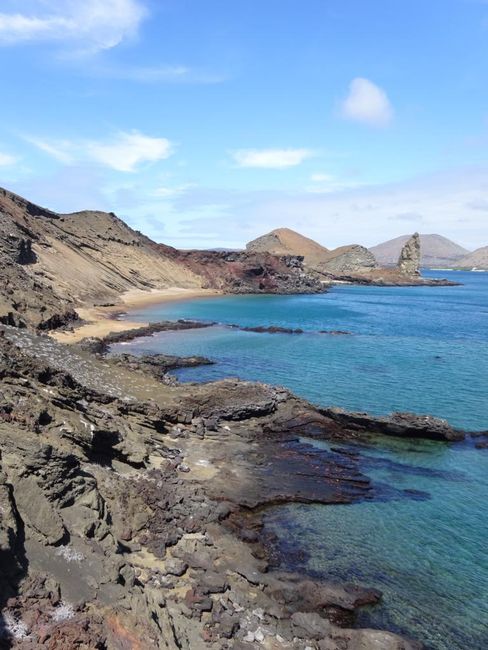
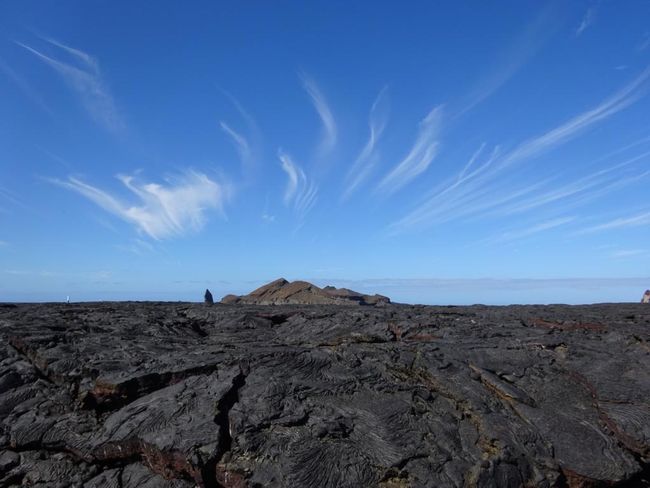
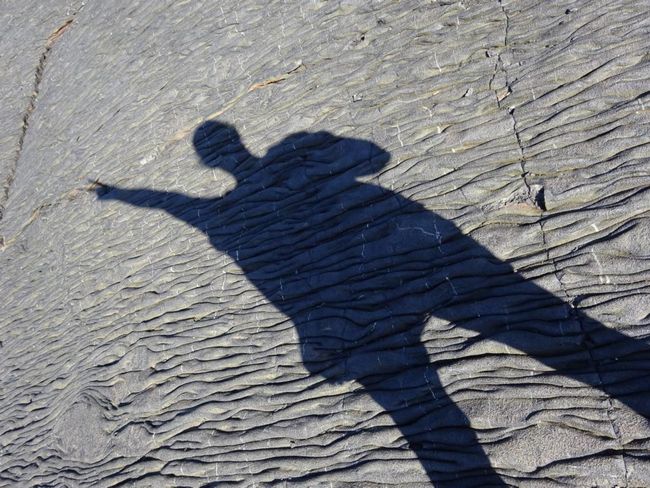
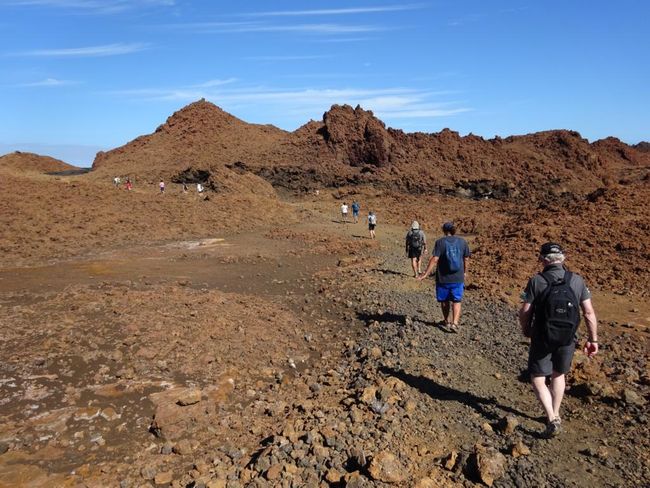
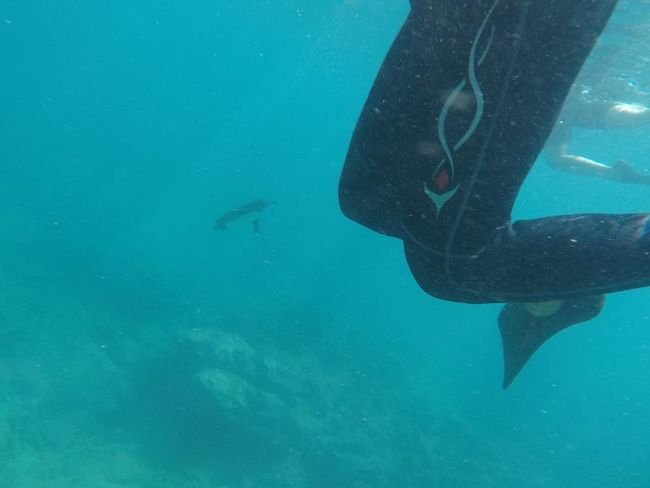
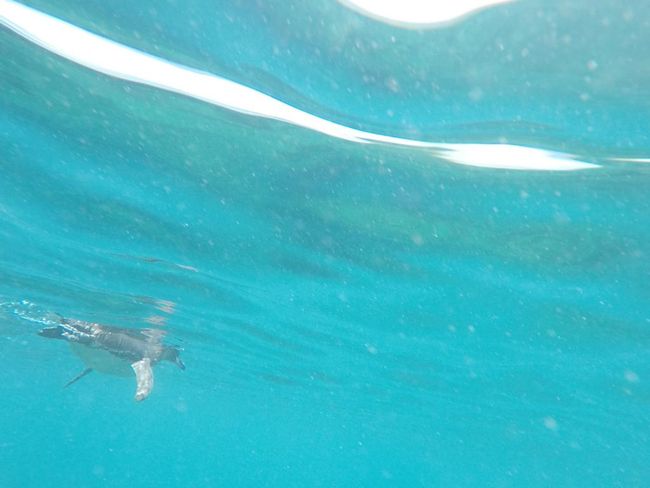
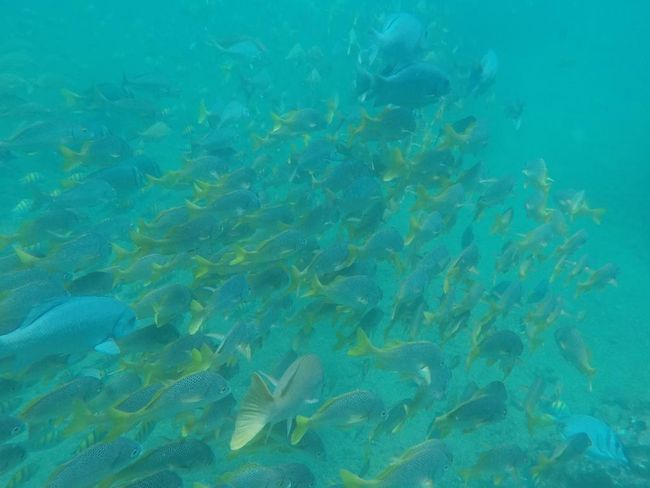
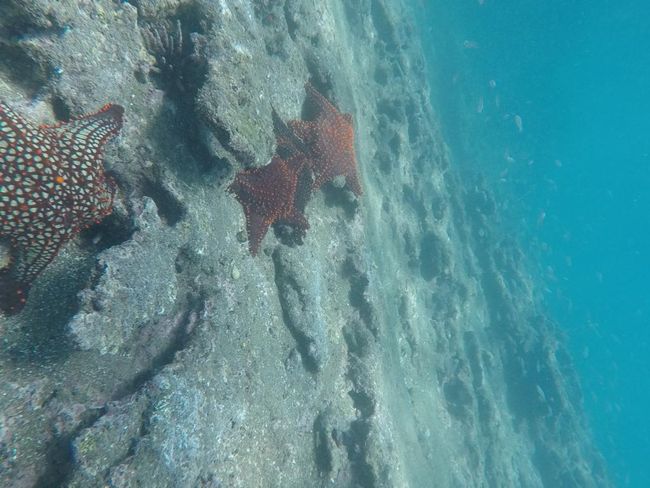
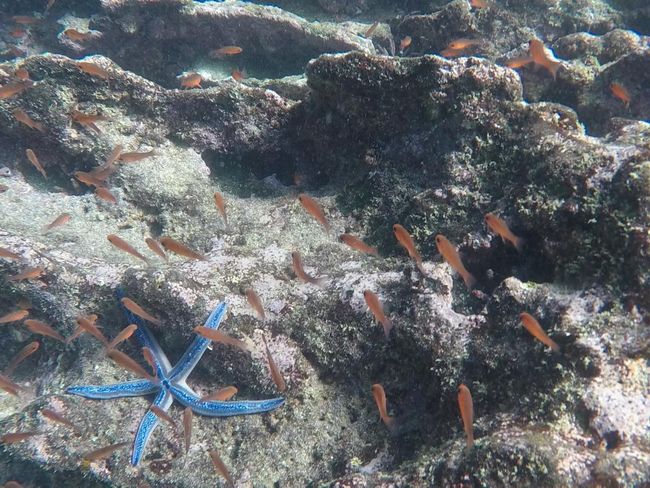
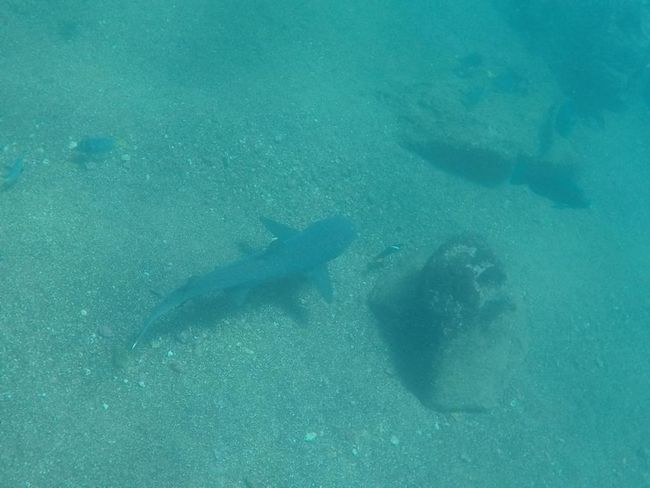
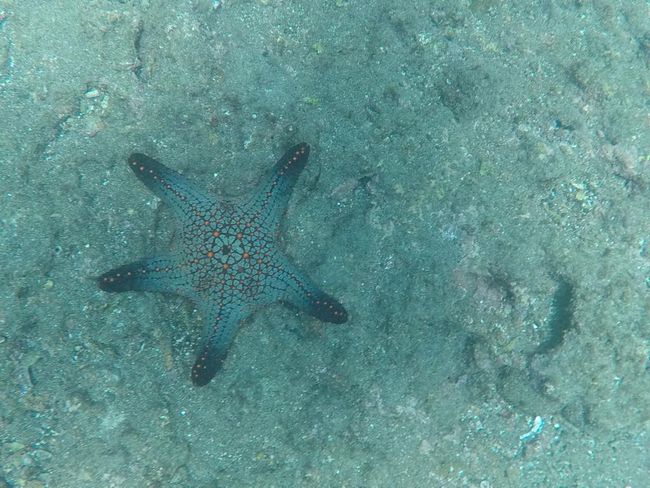
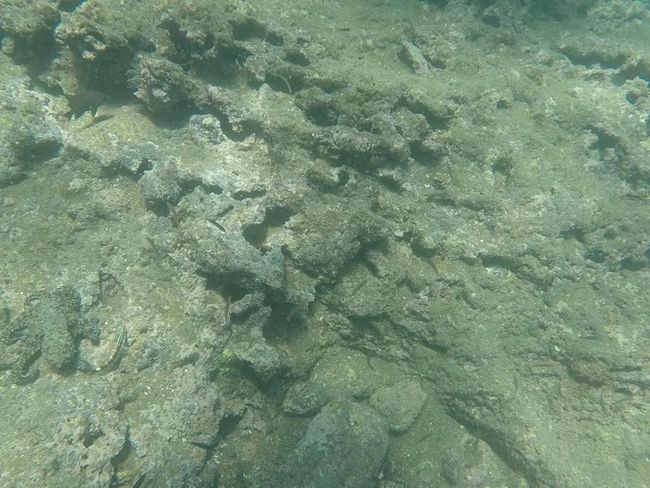
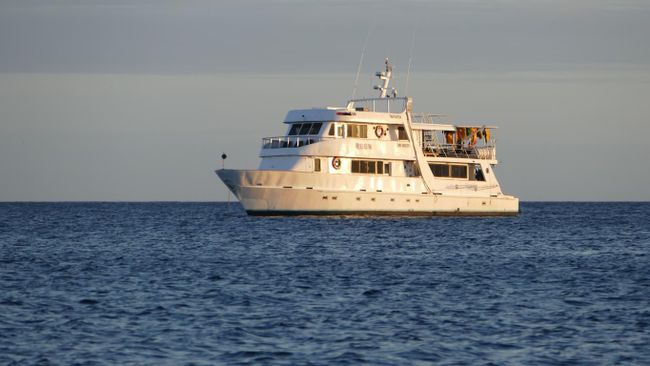
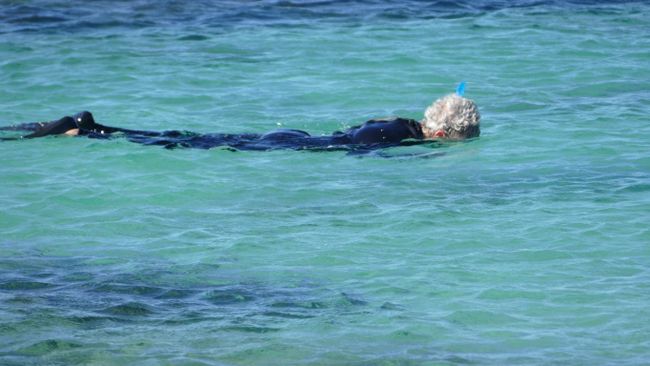
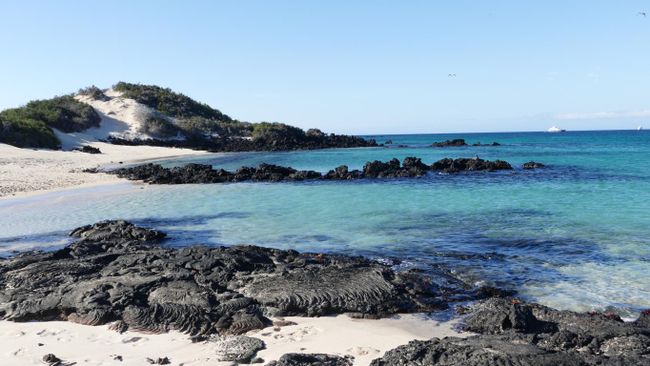
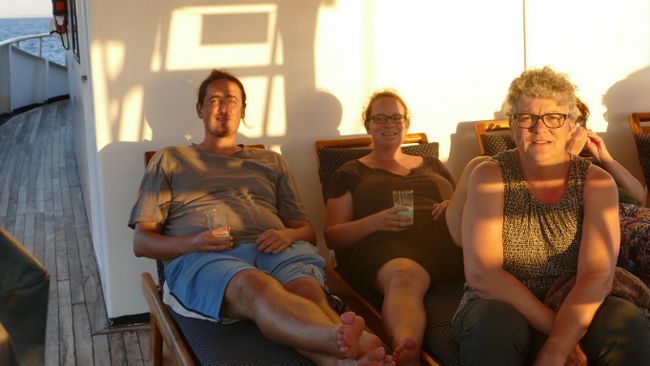
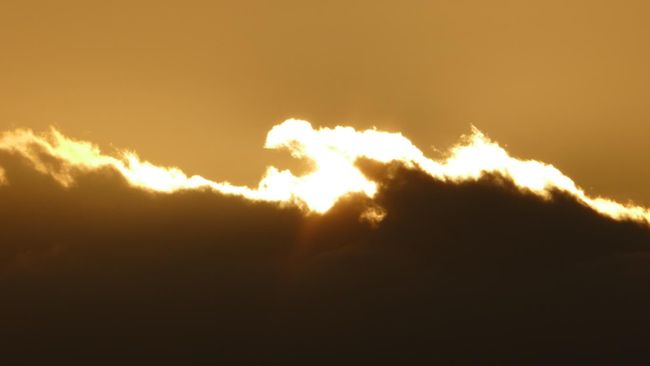
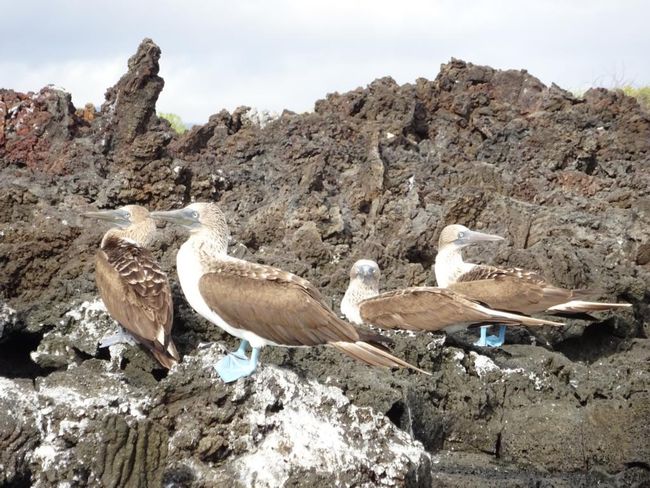
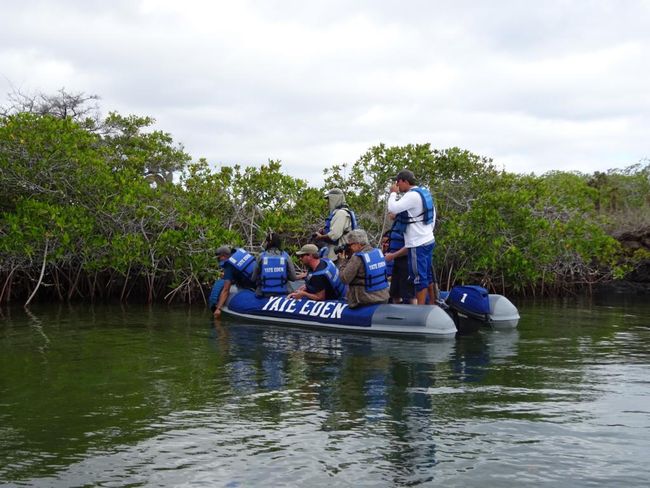
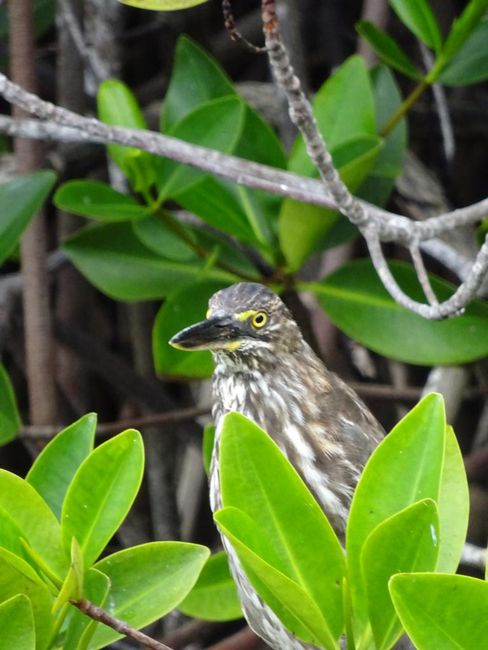
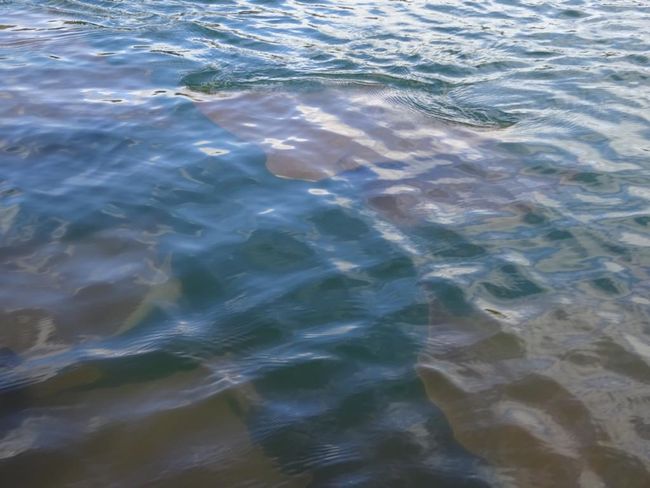
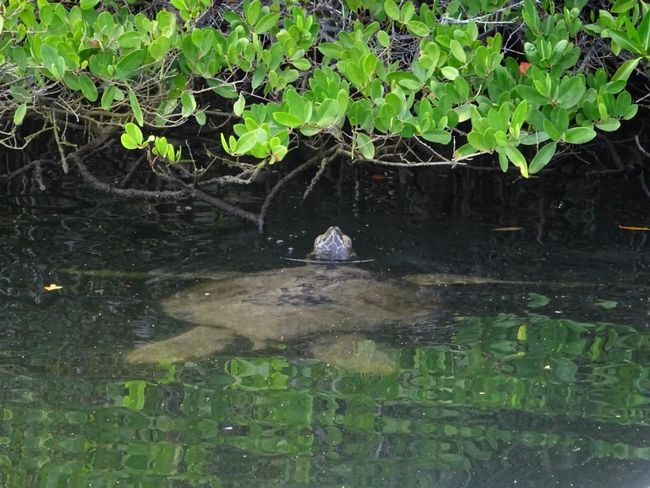
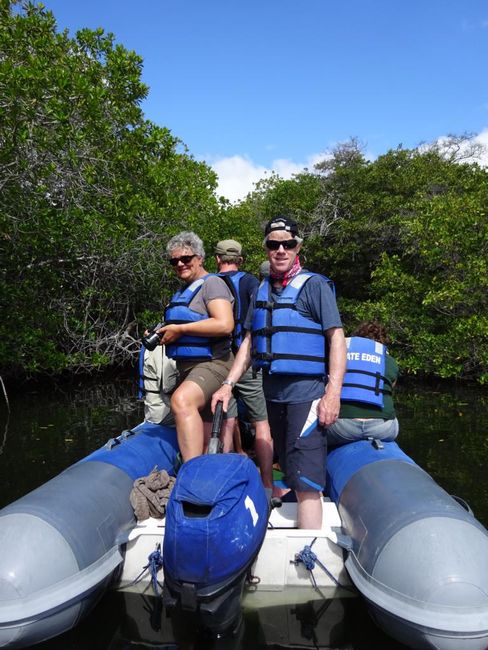
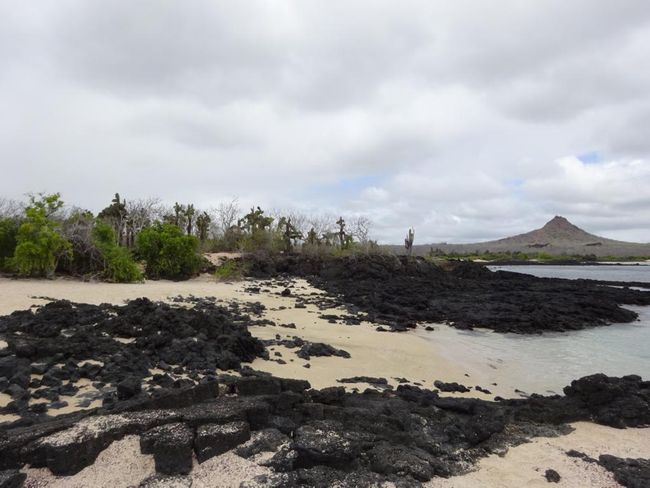
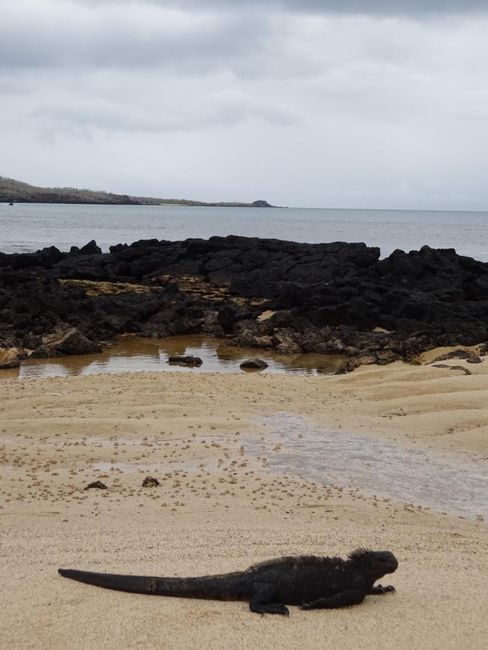
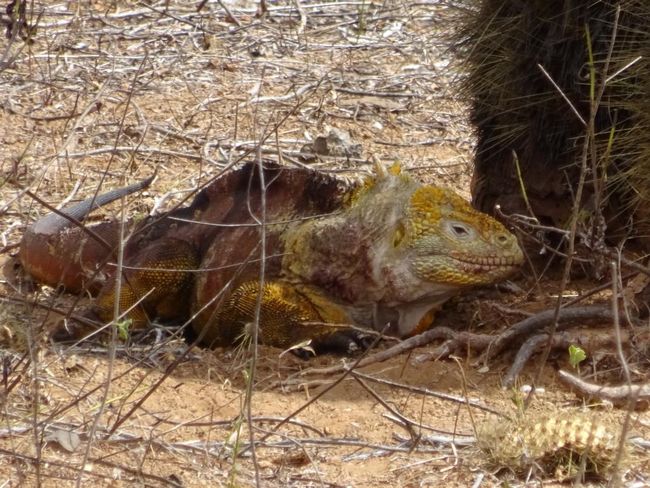
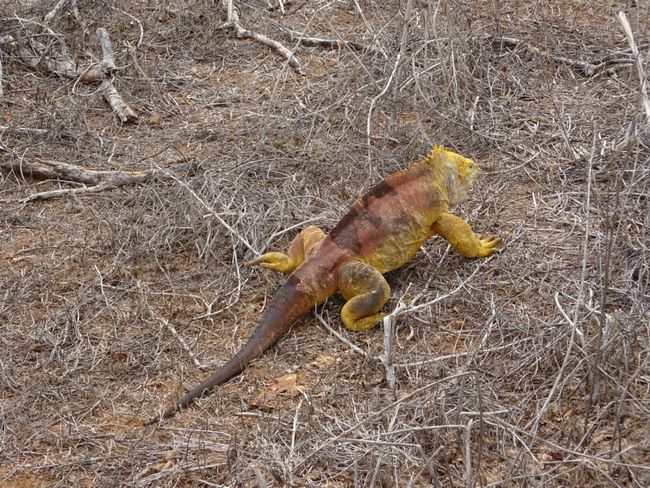
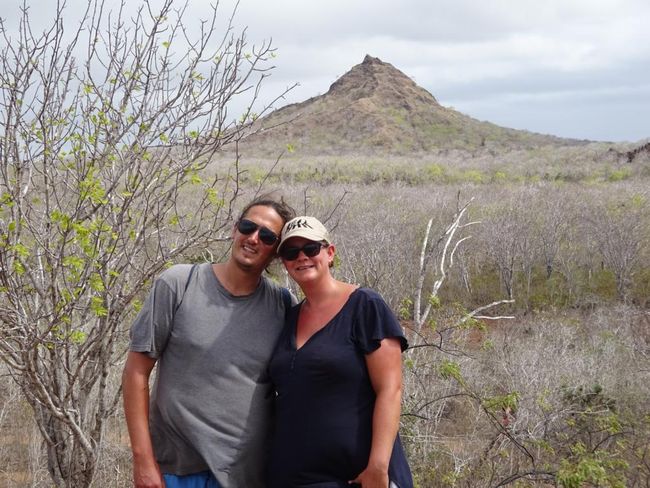
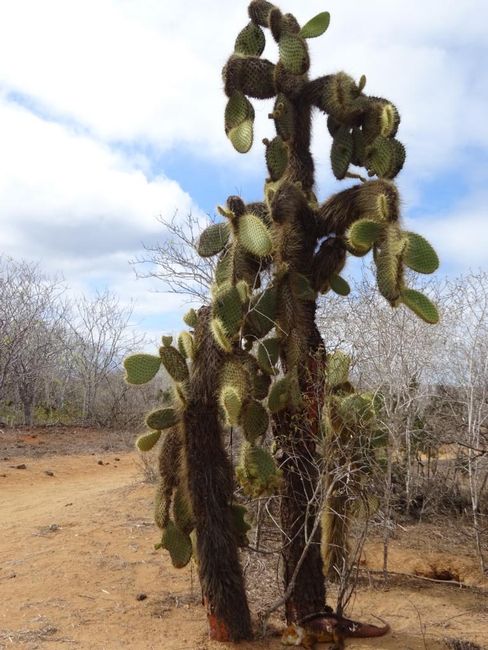
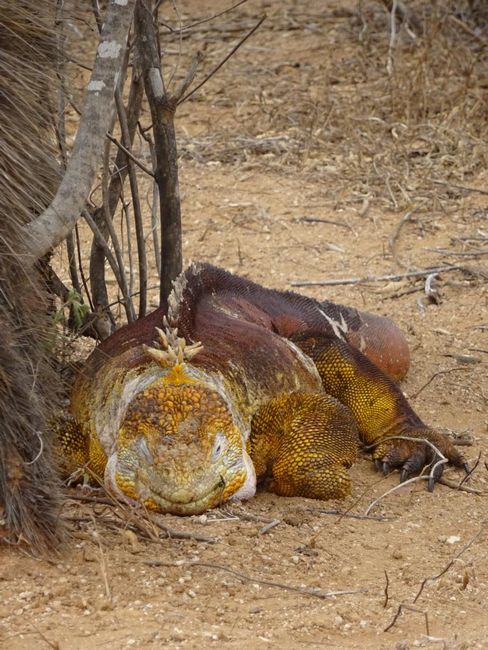
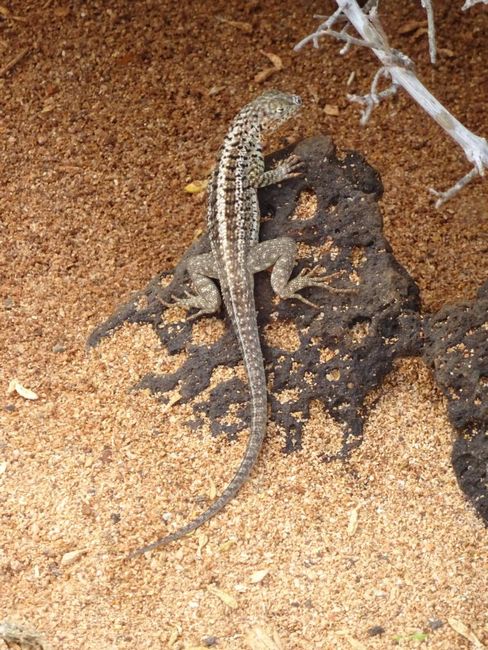
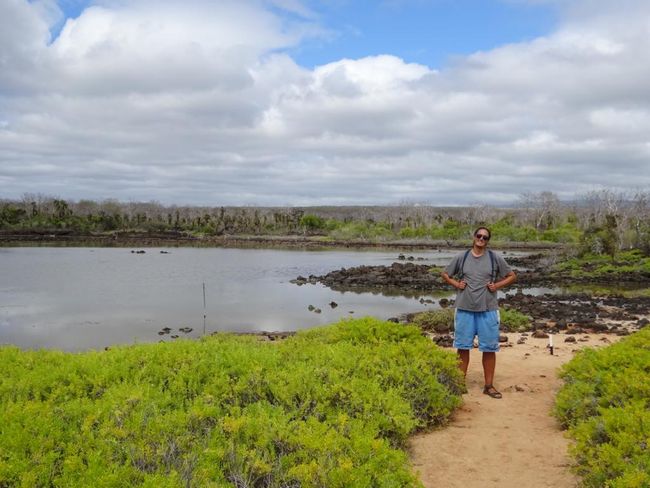
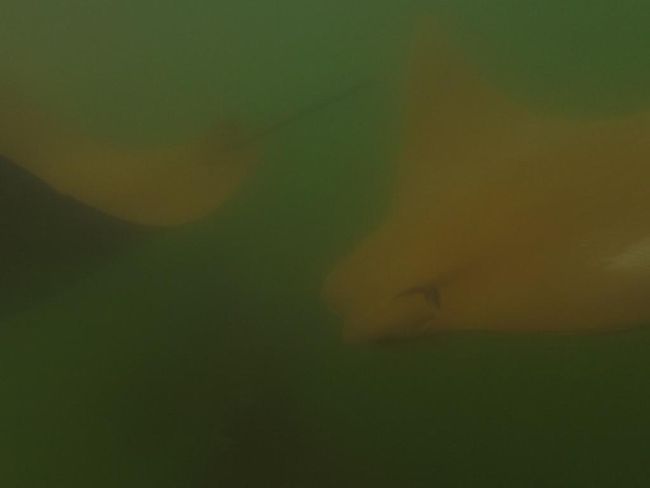
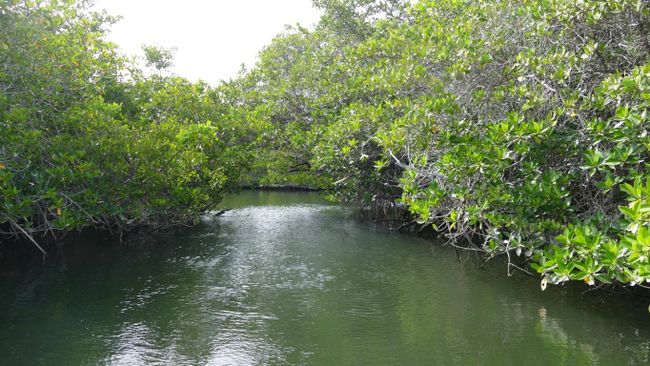
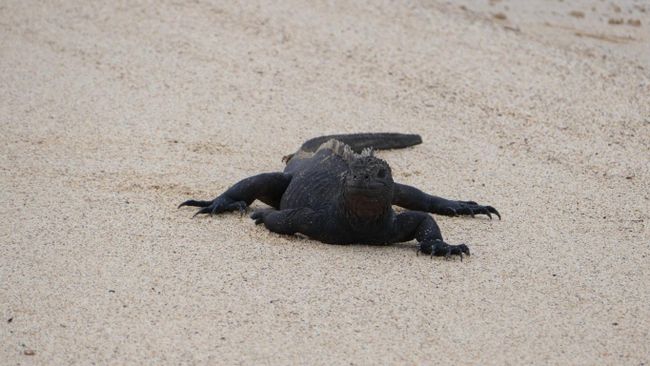
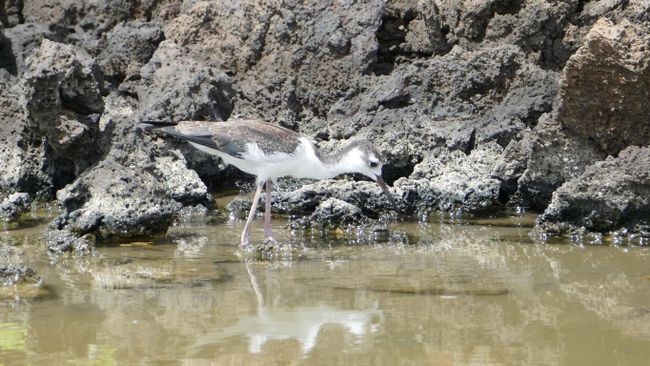
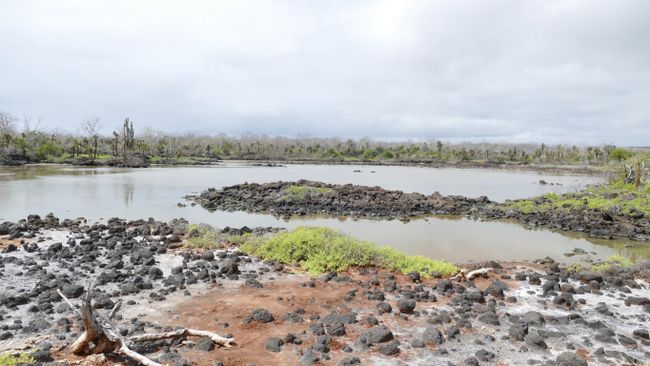
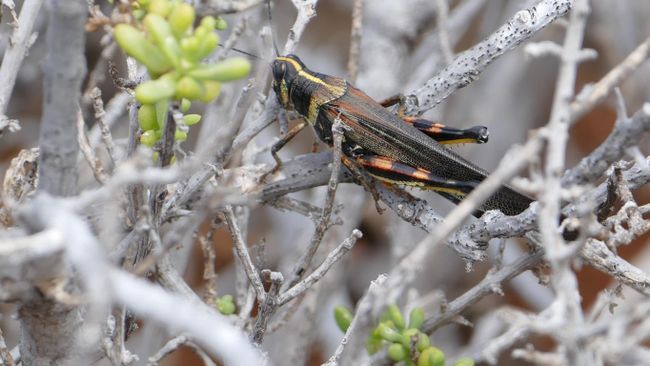
Willakuy qillqaman qillqakuy
Finally, the day had come when our 7-day cruise around the Galapagos Islands would start. Unfortunately, the cruise ships do not start in Puerto Ayora, but at the channel near the airport, so we had to drive all the way back to Baltra Island to meet our guide and the rest of our group for the next week.
After all flights arrived and we were all together, we made our way to the port. We were picked up by small inflatable boats and shortly thereafter boarded the "Eden" for the first time. The small yacht accommodates 16 passengers and the crew and is really pretty. It was a great place to spend a week. The ship had 2 cabins on the upper deck with bunk beds, 2 cabins on the main deck with double beds (one of which was occupied by the guide), and 4 cabins on the lower deck with two single beds each. We had booked the cabins on the lower deck. The disadvantage was that it was a bit louder there because it was close to the engine room. The advantage was that they were the largest cabins, and there was less rocking in the lower part of the ship. There was also a lounge and dining area with a small bar on the main deck and another lounge area with some deck chairs on the upper deck.
In our group were Robyn and Darien, a couple from Australia, Dhara and Ushan, a young couple from New Zealand and Sri Lanka, Anouk and Sander, a couple from the Netherlands, and Magdalena and Barbara, a mother and daughter from Germany, as well as an older couple from Denmark. Later Coby and Paul also joined, also a couple from the Netherlands. As usual on such group trips, the ice broke pretty quickly, the initially reserved and somewhat cool atmosphere thawed, we started talking to each other, and it didn't take long for the group to come together and have a lot of fun together.
After everyone had taken their rooms on board, we already had the first lunch while the Eden left the port and headed to the first anchorage.
Day 1 Afternoon
Isabela Island: Las Bachas Beach
After lunch, there was the first briefing, where the snorkeling equipment was handed out, various important information and safety instructions were communicated, and the program for the afternoon was explained. Our first stop was Las Bachas Beach on the main island Santa Cruz. For the first time, we had a "wet landing", which means that we were taken to the beach by the inflatable boats and had to get off in ankle-deep water.
The walks at the different landing points are strictly regulated, so you can only follow the marked path and by no means walk freely on the island. This is primarily to not disturb the animals and endanger their nesting sites. Boats are also not allowed to sail freely between the islands. The cruise companies have to check their schedules with the central administration of the National Park and get approval. Even if you were to arrive as a private person with your own sailing ship, you would have to specify exactly when and where you would sail through and where you would anchor. Only a certain number of ships are allowed to anchor at a landing site at the same time, and the number of people allowed to go ashore at the same place at the same time is limited.
Las Bachas Beach was initially not very spectacular. We encountered some marine iguanas and visited a lagoon where there were supposed to be flamingos. However, there were only a few of them. The beach also serves as a nesting place for sea turtles. However, you can only recognize the nests as small pits in the sand where the mother turtle lays her eggs before returning to the sea. The baby turtles also head for the water as soon as they hatch, but only a small fraction of all the young make it back to the sea, the rest ends up as food for other animals on the few meters of the way.
After the tour, we had the opportunity to snorkel from the beach for the first time. This first snorkeling trip was mainly for practice for the inexperienced members of the group. There was nothing to see except sand, a few rocks, and a few colorful fish.
By the way, you can see these red crabs along the rocks everywhere on the Galapagos Islands. Our guide explained to us that it has been forbidden to eat these crabs for 5 years, which is why there are so many of them now.
After returning to the boat, dinner was served soon after. The food on board was really excellent and varied, and special requests, allergies, and special diets were consistently taken into consideration. Othmar especially suffered from this. As instructed by Manuela, I conveyed to the agency that Othmar should not drink milk. After all, I was just the organizer and couldn't be blamed for poor Othmar constantly being served a special menu, from welcome cocktails to snacks, breakfast, and desserts, even though it probably wouldn't have been so strict to refrain from milk. The crew really made an incredible effort to meet these requirements, and the rest of us had a delightful time at Othmar's expense.
Most of the time, there was a small buffet for the meals, where you could help yourself. The chef was always praised and was the one who earned the most tips at the end of the week (well deserved).
In addition, there was a daily briefing where the program for the next day was presented.
In the evenings, everyone went to bed very early. First, because after the excursions and snorkeling tours, everyone was really exhausted in the evenings. Second, because we had many long passages in open water during the night, so everyone tried to sleep before the worst rocking started.
Already on the first night, we sailed for 7 hours to the far-northern island of Genovesa, and the swell was actually considerable, so it was definitely most comfortable for me in the horizontal position.
Day 2: Genovesa Island
The small Genovesa Island is one of the northern islands of the Galapagos archipelago and is not visited by too many tours. But that also makes its charm. In addition, to get there, you have to cross the equator because it is located in the northern hemisphere.
In the morning, we went ashore at Darwin's Bay, where there was a lot of activity. The place was full of nesting sites for various birds. First, we encountered Galapagos seagulls. The Nazca boobies and the red-footed boobies were either still busy incubating the eggs in their nests or were already taking care of their already hatched chicks. The frigatebirds were not quite ready yet, most of them were still in the process of finding a partner. To do this, the males inflate a red sac of skin under their heads to attract attention and attract females. As our guide explained to us, interestingly, mainly brothers and cousins group together to increase their chances of passing on the family genes.
There was also a sea lion colony on the beach.
After the tour, we had the opportunity to snorkel from the beach. Again, it wasn't very spectacular, at least not for us who had snorkeled in several places before. There were mainly many colorful fish to see.
In the afternoon, we first went snorkeling along a cliff. We were always accompanied by the inflatable boats, which picked us up along the way when we had enough or got tired. There were also various fish to see, as well as a few sharks, and a sea lion swiftly passed us by.
After snorkeling, we quickly returned to the boat, where we changed clothes because shortly afterwards we continued with the afternoon landing at Prince Philip's Steps. This time it was a "dry landing", which means that we didn't have to get our feet wet but hopped from the inflatable boats onto a rock step.
At this landing site, there was a very sparse but fascinating vegetation. Many birds could also be seen here. The highlight was meeting the short-eared owl, a bird with apparently short ears. Manuela showed special skill in spotting owls because she was the one who discovered one of the little guys in a crevice, which none of us would have seen there.
Day 3: Bartholomew Island & Sullivan Bay Island
Did I mention that breakfast was served every day at 07:00? Definitely Jörg and my favorite time of the day! On the third day, this pleasure was even topped because there was already a boat ride to a penguin colony at 06:00 in the morning. This activity was, of course, voluntary, which means we could have stayed in bed... but who wants to miss the penguins? So we somehow forced ourselves out of bed early in the morning and enjoyed the fact that we only had to sit in the panga (inflatable boat) and didn't have to take long walks. We actually saw some penguins standing on rocks or swimming back and forth between rocks. However, it was a difficult task to photograph the little creatures properly.
After breakfast, we went ashore again to climb to the summit of Bartholomew Island. The summit was admittedly not very high, and along the way, there was a wooden path with steps, so it was not too difficult to manage. Nevertheless, the heat and the blazing sun made it very difficult, as there was no shade. There is hardly any vegetation on the island, only a few plants that can survive in the dry environment have settled here. From the summit, you have a stunning view of the surrounding islands and Pinnacle Rock, one of the most photographed subjects in the Galapagos.
Before lunch, we already headed to the next destination, Sullivan Bay Island, where we would go ashore in the afternoon. The landing at Sullivan Bay was something very special. There were no animals, no vegetation, absolutely nothing (except for the sun, which was constantly shining from above). This is because you actually walk on a lava flow that is still relatively young (about 170 years old). The only thing to see were the absolutely fascinating patterns that formed as the lava cooled, for example, by wind blowing over the landscape. It really looks as if the lava had just cooled yesterday. From the lava field, you could see several red-colored hills all around, with the red color being due to the iron content in the rock. Here, you really had the feeling of walking on the moon, far away from this world.
After the rather strenuous hike in the blazing sun over the lava flow, we were able to snorkel from the beach. And promptly, a penguin joined us, or rather whizzed past us several times at high speed.
We also saw many different colored starfish underwater, some sharks, and even a small octopus! Thanks to me, so to speak, because I spotted the little guy. And this pleasure was only reserved for a few in the group because most of them had already gotten back into the pangas to warm up. It must be said that the water in the Galapagos archipelago is really quite cold. Most of the passengers had rented a wetsuit, and I also did, mainly to avoid getting a cold. Only Jörg and Othmar were among the tough guys and only swam in their bathing trunks.
In the evening, after dinner, I had a long chat with Magdalena from Germany. While we were sitting comfortably at the back of the ship and chatting, we even had a stowaway: a sea lion sitting on the stern plank of the ship, frolicking around. Really incredibly cute.
Day 4: Santa Cruz Island
After our trip to the northern part of the archipelago, we returned and explored some more places around Santa Cruz Island before heading south.
In the morning of the fourth day, we took a panga ride in the Black Turtle Cove. Here it was not allowed to go ashore or swim in the water. This is because it is a place where many animals give birth, especially we encountered many baby sharks that could be seen well from the inflatable boat. There are also many different types of mangroves (red, white, and black mangroves) around the cove. In addition, we saw a multitude of turtles here, which could be spotted every time they stuck their heads out of the water to breathe. It is almost eerie how long turtles can hold their breath, we observed this several times during snorkeling tours. An absolute highlight was the school of golden rays that passed by us several times next to and under our boats at the water's surface. Although you could see the animals quite well from the boat, we would have loved to jump into the water to observe the animals underwater. But unfortunately, we had no choice but to put our GoPro in the water and hope for some good snapshots. Furthermore, the usual suspects of birds were present: blue-footed boobies, pelicans, and several other small birds.
In the afternoon, we went ashore at Dragon Hill, where we could observe yellow land iguanas. On the Galapagos Islands, there are even pink iguanas, but unfortunately, they live in a place that is not accessible. Again, we walked through a very barren landscape around a hill, where besides the large yellow iguanas, only small lizards live.
Since the next sea passage took place in calmer waters along Santa Cruz between the main islands, in the evening we finally enjoyed a drink from the bar without having to worry about hanging our heads over the railing afterwards. So we ordered a "Blue-Footed Booby", which was really delicious. Of course, we immediately grabbed the recipe to put it on our own cocktail menu when we have a home again.
Willakuy qillqaman qillqakuy
Kutichiy
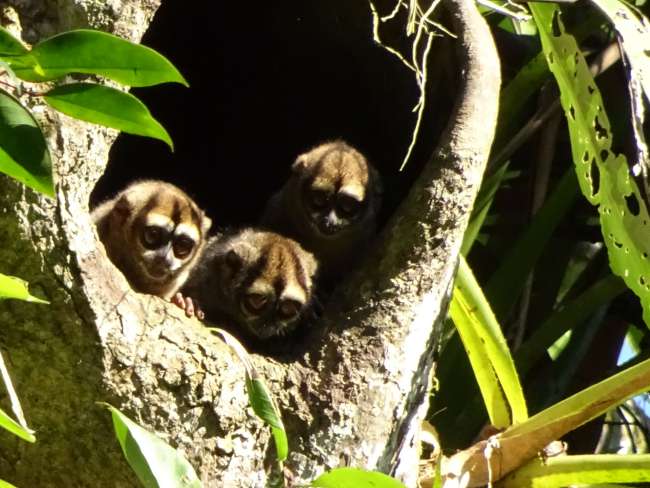
Viaje willakuy Ecuador
